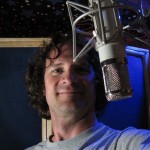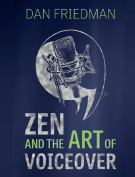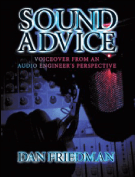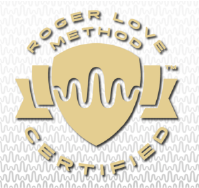 Last Friday I found out that I won Edge Studios Weekly Script Recording Contest. How awesome is that? While I’m really excited about winning and I certainly had no expectation that I would, I’m also not surprised that my entry was successful. I had a clear “vision” of what my production was going to sound like when it was finished… before I even began to work on it. I believe that having that vision is what led to the success of my contest entry. That vision and the steps I took to turn it into a reality, is what this blog is all about.
Last Friday I found out that I won Edge Studios Weekly Script Recording Contest. How awesome is that? While I’m really excited about winning and I certainly had no expectation that I would, I’m also not surprised that my entry was successful. I had a clear “vision” of what my production was going to sound like when it was finished… before I even began to work on it. I believe that having that vision is what led to the success of my contest entry. That vision and the steps I took to turn it into a reality, is what this blog is all about.
Creative people often have a very good idea of what something will look or sound like before they even get started. That “vision” (for lack of a better word when it pertains to audio) is what guides you as you begin to put the elements together and execute your plan. But first, just as an artist needs a canvas, the director’s notes provide the framework and foundation for everything that follows.
Here are the notes from the Edge Studio website:
Director’s Notes:
“We’re looking for a talent who can provide fully produced spots with a new sound for some of our sport promos. The delivery should be energetic, hip, and confident — not gimmicky or conventional. We will want fully produced mp3s with music and sound effects (when appropriate). This audition should be 5 seconds and should be fully produced. Please slate your full name and “CBS Sports Telecast 1 audition”. Thank you.”
Being able to work within the guidelines provided is absolutely essential to success in this case. Just as a painter is (usually) limited to the space provided by canvas, TV and radio are limited by time. In this instance, the most strict guideline given was that the audition must be 5 seconds. There are some rules that can be broken… a time limitation on a broadcast production is not one of them.
A key element to not only having vision, but also knowing you can turn it in to reality, is having the right tools available to execute it. Having good quality tools allows a carpenter to build a house, a deck or install hardwood floors faster and easier then if they simply had a hammer and a saw. Good tools also help to ensure better results. The tools required for this audio production are: my voice, studio equipped with good quality gear, music, sound effects and powerful computer with multitrack DAW.
For voiceover and voiceover production, your vision for the final product must originate from the script. The script determines the voice delivery as well as the production elements that will be used to maximize the effectiveness of the full production.
Here is the script from Edge Studio’s website:
“This CBS Sports telecast is brought to you by Wells Fargo…. together we’ll go far.”
This script, as short as it is, provides a great deal of information. Of course “CBS sports” and “Wells Fargo” are important because they are the client’s names, but they’re also key to creating a vision for the overall production. Since this is a fast “sports” promo, strong and powerful music would seem appropriate. I chose two cuts that I believed would be a good fit. Because Wells Fargo is known for their horse and carriage theme, galloping horses make a great sound effect and help draw attention to the sponsoring client. As you will later read, Edge suggests using crowd noise or a sports team sound effect. While this would also be appropriate (and I had thought about it), my vision included the horses and I believed crowd noise could clutter the final mix. Using the horses also gave me the opportunity to illustrate the final line in the spot, “together we’ll go far” by panning the horses, with them entering the soundscape on the left and leaving it on the right.
My last step before getting into the booth to do the voiceover was to import a couple of “swish” sound effects and a “low drone” into my DAW. I would add these to give the spot more movement and create additional drama. They are only slightly audible in the final mix and are there to provide a sensation more than a noticeable sound.
After getting into the booth and recording the line ten times, I chose my second take. However, all of the takes were longer than five seconds, so time compression was an absolute must. Once that was done and I verified that the voiceover was still sounding good, it was time to mix.
First, I laid my voice track over the two music cuts I had chosen and decided which cut was working best. I then edited the music track to fit the 5 second time frame. Next I added the galloping horse sound effect, put it in position, edited that to fit the space I wanted to fill and panned it from left to right. Next, I added the low drone and swish sound effects. I mixed in the voice track and used dynamic compression, EQ and a little reverb to give the voice some additional separation and brilliance. Lastly, I mixed all the tracks down through a master limiter and exported it to a stereo MP3 file. Throughout this process I was adjusting levels and carefully listening to every element and every tweak. In the end, I had produced a spot that matched my “vision” almost exactly.
Here were the comments on my entry from Edge Studios:
Great job! His slate is clear and delivered in the same style as his audition. His mix is very solid. And he’s one of the very few to come in at the requested 5 seconds. Adding sound effects of a crowd cheering and/or a sports team playing would have made this audition even better (although doing so was not necessary). Nice work danfriedman!
Clear visions of the final production don’t always come easily, but it is certainly helpful when they do. In voiceover production, vision will usually begin with the script and the delivery, but truly come into focus as all of the elements are brought together. But what is even more important than your vision as the voice talent or the production engineer, is the clients vision for the final production. If your vision for the voiceover or the production doesn’t match that of your clients, it is critical that you have the ability to change your point of view. After all, beauty is in the eye… ahem… ear… of the beholder.



